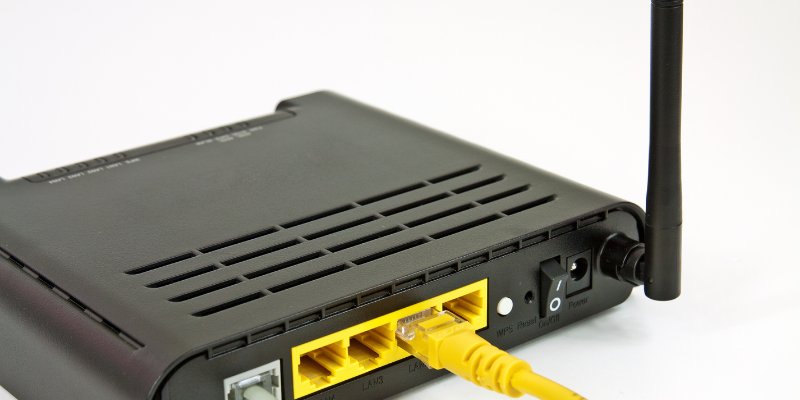
Understanding Symmetric Digital Subscriber Line (DSL)
Jan 30, 2024 By Mark Allen
Optimizing connections in digital communication requires a deep understanding of data transmission principles. SDSL is an important technology in this setting, giving a unique data transfer strategy. Instead of asymmetric bandwidth, SDSL delivers equal capacity for upload and download rates, improving bidirectional data flow. SDSL is ideal for real-time communication, video conferencing, and file sharing since it maintains upload and download speeds. SDSL is also useful in distant workplaces and industrial situations where reliable connections are needed. Understanding SDSL's nuances is crucial for managing digital communication infrastructure as organizations increasingly depend on reliable internet connections.

SDSL's Symmetric Data Transfer Mechanism:
Due to its capacity allocation approach, SDSL may offer symmetric data transport, guaranteeing upload and download rates are equal. SDSL gives equal bandwidth to upstream and downstream communication channels, unlike asymmetric systems like ADSL. SDSL's dedication to serving applications and situations that need persistent bidirectional data flow drives this careful capacity allotment.
SDSL divides bandwidth to enable symmetrical data transport. SDSL addresses the imbalance of asymmetric technologies by assigning the same capacity for upload and download. This fair distribution is critical for video conferencing, real-time collaboration, and concurrent data interchange. SDSL is important in the expanding digital communication infrastructure because of its efficiency and dependability. It is a favored option for organizations and applications that need smooth and equitable data flow in both directions.
Applications of SDSL:
SDSL is crucial to corporate contexts that need symmetric data transport. SDSL is widely used for reliable and balanced communication in various circumstances. SDSL's symmetrical data transmission benefits video conferencing, real-time data exchange, and VoIP. The identical priority given to upstream and downstream data assures a smooth and consistent user experience, making SDSL a good option for high-demand communication and bidirectional data flow.
SDSL is crucial for operational efficiency when a reliable, high-speed connection is needed. Professional environments where continual connection is essential for daily operations like it for its dependability. SDSL is useful in many corporate applications, including team collaboration, real-time customer engagements, and network data sharing. This emphasizes its position as a technology designed for contexts where symmetric and reliable data transport is essential for optimum communication and operational efficiency.
SDSL vs. Normal Internet Connections:
SDSL's bandwidth allocations differ greatly from typical internet connections. SDSL has equal upload and download speeds, unlike other networks that emphasize download speeds. In essential bidirectional data flow situations, this basic property is crucial. SDSL's symmetry meets the needs of applications that need constant and balanced data transfer, unlike typical internet connections, which prioritize quicker downloading rates for streaming and online surfing.
SDSL's commitment to equitable upload and download rates makes it a desirable corporate option. Reliable bidirectional data flow is needed for real-time communication, video conferencing, and concurrent data exchange. SDSL's symmetry guarantees a smooth user experience in communication-intensive settings. The difference between SDSL and regular internet connections underscores the need to choose the proper technology for the use case. This emphasizes the significance of matching the connection solution to business activities, where SDSL's symmetrical data transmission is especially useful.
Types of SDSL:
Single-pair High-speed Digital Subscriber Line (SDSL):
SDSL, or Single-pair High-speed Digital Subscriber Line, transmits data over one pair of copper wires. Its symmetrical data transmission rates for upload and download set it apart. Video conferencing, real-time collaboration, and other applications that need balanced communication channels require continuous bidirectional data flow, making this beneficial in business. SDSL is practical and cost-effective for enterprises that want stable and efficient communication without many pairs of cables.
SDSL provides reliable and synchronized data transport in situations when standard asymmetric connections fail, helping organizations stay efficient. Single-pair High-speed Digital Subscriber Line is ideal for individuals who value constant performance in upstream and downstream communication channels due to its simplicity and symmetry.
Symmetric High-speed Digital Subscriber Line (G.SHDSL):
G.SHDSL is an ITU-T standard that supports symmetric data transport across multiple copper pairs. G.SHDSL offers more bandwidth allocation flexibility than single-pair, making it a flexible connection option for enterprises. The standard is commonly used in professional settings where symmetric connections are needed for data exchange and voice communication.
G.SHDSL's flexibility allows it to scale with enterprises as they expand. Using numerous copper pairs improves its dependability, creating a symmetrical and durable communication channel for various applications. Symmetric High-speed Digital Subscriber Line is chosen by enterprises needing a standardized yet customizable communication infrastructure.
ISDN Digital Subscriber Line (ISDL):
ISDL combines ISDN and DSL technologies. This integration creates a symmetric data transmission service. ISDL gives enterprises a voice-and-data communication route. This dual capability makes it useful for enterprises to streamline their communication infrastructure.
ISDL is very useful in speech and data integration situations. ISDL's capacity to manage speech and data transport simultaneously benefits businesses. For organizations seeking a unified communication solution, ISDL is a good option since ISDN and DSL technologies work together to provide dependable and effective communication.

Symmetric Digital Subscriber Line Lite (SDSL Lite):
SDSL Lite is a version of SDSL. SDSL Lite maintains symmetric data transport but runs at lesser speeds. This makes it affordable for moderately connected enterprises. SDSL Lite uses balanced upstream and downstream communication to provide an affordable alternative to high-speed connection.
SDSL Lite is used in settings requiring symmetrical data transmission but not high-speed connection. SDSL Lite is preferred by businesses that value data velocity and cost. This version shows SDSL's flexibility, giving companies alternatives that meet their connection and financial demands.
Conclusion:
In conclusion, Symmetric Digital Subscriber Line (SDSL) is a significant and unique data transmission technology that provides symmetric speeds for numerous purposes. Its unique features distinguish it from ordinary internet connections, especially in corporate contexts where upstream and downstream communication must be balanced for smooth operations. The variety of SDSL types allows for scalability and customization to meet individual communication demands. SDSL guarantees equal data flow in both directions as technology evolves. SDSL continues to shape digital communication by offering enterprises a stable and strong connection solution for collaborative projects and high-data transactions.
-
 Internet & Telecom Jan 31, 2024
Internet & Telecom Jan 31, 2024Strategies for Data Center Optimization
Help organizations achieve efficiency and cost-effectiveness with Data Center Optimization. Explore ways to increase data center resource use, performance, and scalability.
-
 Entertainment Jan 31, 2024
Entertainment Jan 31, 2024Avatar: Frontiers of Pandora Review
Explore the stunning World of Avatar Frontiers of Pandora, a new action-adventure game. Experience the beauty and danger of this alien planet.
-
 Internet & Telecom Jan 30, 2024
Internet & Telecom Jan 30, 2024Unpacking SOA (Service-Oriented Architecture)
SOA, a revolutionary software design and development method that creates modular, adaptable, and scalable systems that integrate across applications and platforms.
-
 Entertainment Feb 02, 2024
Entertainment Feb 02, 2024The Grand Slam Experience: Unveiling the Essence of Major League Baseball
Dive into the thrilling world of Major League Baseball (MLB) with our comprehensive guide. Explore the rich history, unique culture, and exciting gameplay that define America's baseball.